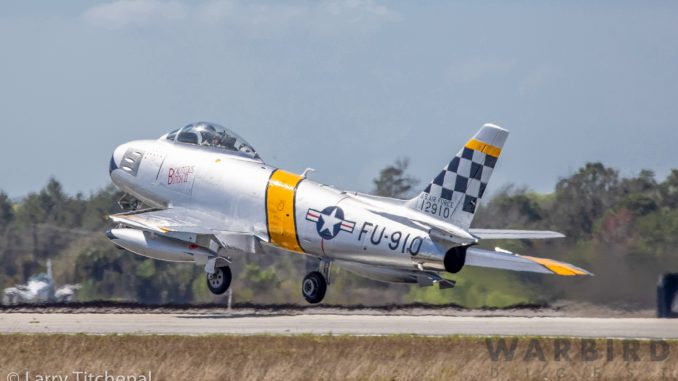
For the past few years, we have been following the efforts at Classic Fighters of America to return Doug Matthews’ North American Sabre to the sky at their facility in Titusville, Florida. Well that momentous first post-restoration flight took place yesterday!
In an exclusive interview with our very own Moreno Aguiari, Doug Matthews described his experiences yesterday in flying his newly-airworthy Sabre for the first time.
DM: “So, today was really a surprise. We were just taking it very slowly, methodically and going through every systems check and all these little items… to tie up a complete restoration from boxes. So finally, things just clicked today. We didn’t really have a schedule to fly, but the weather was perfect. So I thought I’d do the first test flight.”
MA: “Was there anything specific that made things click, or was it just brewing and you were ready to go?”
DM: “No – well we had done multiple engine runs, and last Friday I did several high-speed taxis right up to liftoff speed. And it gave me a lot of confidence that the thing was running pretty normally, pretty safely. So over the weekend, I thought, ‘There’s nothing left to do except to fly around the circuit, and might as well give it a try.’ So, today the weather was perfect and I said, “We’ll do a more extensive preflight and a more extensive after-start systems checks and everything. But if everything is perfect, I think the weather is perfect. I think I should just even fly it for 10 minutes.”
MA: “How do you prepare for a test flight coming off a multi-restoration? Is there anything that you do differently from a normal flight?”
DM: “Yeah, you really go through the maintenance manual systems checks, and not just the pilot’s manual systems checks, but maintenance checks, all these special systems checks. So you have to put on a maintenance hat and really go through each system in depth for functional checking, to make sure that if you pull back, the nose is going to go up, not down. And are all the monitoring and systems gauges reporting accurately and the modifications that we did, are they all safe and accurate? And it’s just a very methodical process that took us… really, it took months.”
MA: “You’ve flown a lot of airplanes, and this is not the first time that you have piloted an F-86, but this airplane hasn’t been flown in ten years… so from a psychological point of view, what goes through your mind as a human being when you take on something like this? Are you nervous, or are you just completely cold?”
DM: “You can’t help but be a little bit nervous… You’ve got in the back of your mind that. It’s different if you’re going to go fly someone else’s airplane, and they say, ‘Hey, we just finished a restoration can you come do the test plan?’ I’ve done that. But this is… it’s different when your shop is doing it and then you’re intimately involved in each of the systems construction… Then you have a much higher level.”
MA: “Okay. Got you… You have a deeper level of confidence, because you saw the work has been done on the airplane?”
DM: “Yeah. I’ve got just the absolute best crew. And they’re so experienced, because we’ve done lots of jet restorations. We’ve done eight Marchettis, the T-33, two A-4s… a bunch. And, so they are so experienced, that I’ve got the greatest confidence in them. And then, two or three days a week, I go to the shop and I’m asking questions – my undergraduate degree and my Master’s degree are in Aeronautical Engineering. So I can ask some pretty specific questions.”
MA: “Who are the main members of your restoration team?”
DM: “Well, the shop chief is Don Pataky, the crew chief is Phillip Ricker… and then we have another half a dozen guys, Al White and AJ and Don Swickert and Trey Powers. Just a whole host of several people that really work on it, and make a difference.”
MA: “Got you. How did the aircraft fly?”
DM: “It flew great… For the first flight, and coming with the depth of restoration we had, including a completely new electrical system, new plumbing system and everything. I had two airframe gripes and four avionics gripes, and avionics revolves around the all-new glass cockpit, stuff like that. So, just extremely pleased… almost no problems. It’s incredible.”
MA: “You just did a straight through flight, without aggressive maneuvers… just shallow turns and things like that?”
DM: “We have a series of test flights we’re going to do. And the first one was only done after three high speed taxi tests. So the first flight was simply to take off, leave the gear and the flaps down, turn down wind and make one traffic pattern and land full stop, taxi back in and shut down and start looking for problems. And then each successive test flight will go further and further and longer. So we have a series of eight test flights that we’ll do before we’re comfortable with the airplane traveling anywhere.”
MA: “Good to know. So now that the Sabre is close to being done, what is next for the airplane? Are you going to keep it or put it on the market?”
DM: “We’re going to do airshows this year and then – probably at the end of the year – it’ll go on the market.”
MA: “Okay… so what’s next for Classic Fighters?”
DM: “Well, we’re always looking for projects. We’ve got a sideline going on a major repair of a Citation Jet for a customer, a structural repair job. But as far as Classic Fighters, we’re always looking for a P-51 project and we have a customer with an F-86 that may want a restoration… We’re just looking for the next project which we can find – a multiyear project.”
MA: “That sounds great! We wish you luck with completing the Sabre and getting her back on the air show circuit. Thanks so much for taking the time to talk with us too.”
Albeit a tiny dot on the screen, the video below at least captures the silky engine notes at the moment Doug Matthews takes to the skies in his newly-airworthy F-86F.
For a recap on Doug Matthews’ Sabre, he acquired F-86F-30 52-5116 in 2013 and its restoration commenced soon after; it is clear that the workmanship is of a very high calibre. This aircraft served in the U.S. Air Force initially, before undergoing reconditioning for service in Argentina. It joined the Argentine Air Force as ‘C-119’ in November, 1960, and flew with that nation until withdrawn from use in 1986. Around 1989 Rick Sharpe re-imported her into the USA, and she has passed through a number of owners in the interim, including the Commemorative Air Force (her last owner). In seeking a suitable F-86 for this project, Matthews was keen to find an example similar to the one he already flies, F-86F 53-1201, which wears the livery of the famed Skyblazers aerial demonstration, forerunner to today’s USAF Thunderbirds.
As already noted, Doug Matthews’ Classic Fighters of America performed the restoration in Titusville, Florida. The work included a completely new electrical system, among other details. Matthews had the aircraft painted to resemble F-86F 51-2910 BEAUTEOUS BUTCH II, one of the Sabres which famed jet-ace Captain Joseph McConnell flew from Suwon Air Base during the Korean War with the 39th Fighter Interceptor Squadron, 51st Fighter Interceptor Wing. McConnell is credited with shooting down sixteen MiG-15 jet fighters during the conflict, while damaging an additional five examples.
Captain McConnell is America’s highest-scoring jet ace, but interestingly, he started out as a navigator on B-24 Liberator bombers during WWII, flying on sixty combat missions. He stayed in the military after following the Allied victory though, and pursued his dream of becoming a fighter pilot; earning his wings at Williams AFB, Arizona in February, 1948. He joined the Korean conflict, quite late, arriving for service in September, 1952. All of his victories came between January and May, 1953, with the first eight being scored in F-86E-10 51-2753. McConnell had each of his fighters painted with the name Beauteous Butchon the side in honor of his wife Pearl, whose nickname was “Butch”. His second Sabre was F-86F-15 51-12971 however, a Chinese MiG-15 pilot named Daoping Jiang got the better of him on April 12th, 1953, shooting him down over the Yellow Sea. Fortunately, McConnell managed to eject from his stricken fighter, and a rescue helicopter plucked him from the water and brought him safely home. He was back flying in combat the following day though, and shot down another MiG-15. The third Sabre which McConnell flew in combat successfully was F-86F-1 51-2910. He shot his final two MiG’s and damaged a third on his final combat mission on May 18th, 1953. His Sabre was painted in his honor following this mission, renamed now as BEAUTIOUS BUTCH II.
McConnell was sent home to the USA, where he took up a posting with the Sabre-equipped 445th FS at George AFB in Apple Valley, California. Soon after, he took up a prestigious posting as a test pilot under secondment at Edwards Air Force Base to evaluate the then-new F-86H variant. While conducting a test flight in the 5th production example, F-86H-1-NA 52-1981, on August 25th, 1954, the aircraft experienced a serious control-system failure and crashed. Sadly, McConnell lost his life in the accident. His legend lives on though, and will be rekindled anew for the aviation-minded public now that Doug Matthew’s new Sabre flies…
Many thanks to Doug Matthews, Classic Fighters of America for their help in creating this article. We also to offer our profuse thanks to Larry Titchenal for allowing us to use his marvelous images of the Sabre’s first flight!
Related Articles
Richard Mallory Allnutt's aviation passion ignited at the 1974 Farnborough Airshow. Raised in 1970s Britain, he was immersed in WWII aviation lore. Moving to Washington DC, he frequented the Smithsonian’s National Air & Space Museum, meeting aviation legends.
After grad school, Richard worked for Lockheed-Martin but stayed devoted to aviation, volunteering at museums and honing his photography skills. In 2013, he became the founding editor of Warbirds News, now Vintage Aviation News. With around 800 articles written, he focuses on supporting grassroots aviation groups.
Richard values the connections made in the aviation community and is proud to help grow Vintage Aviation News.


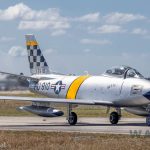
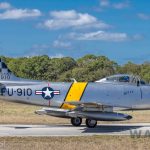
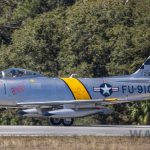
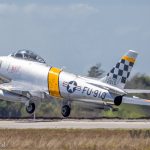
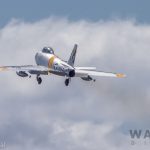
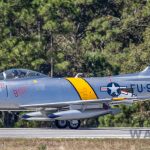
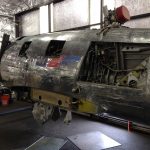
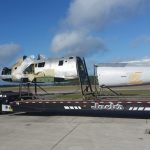
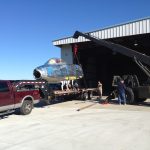
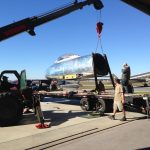
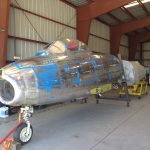
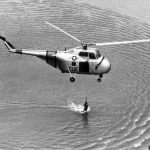
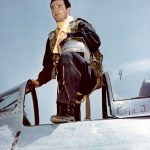
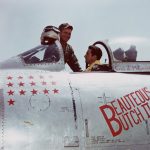
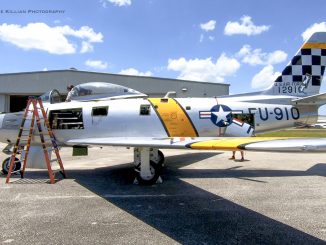
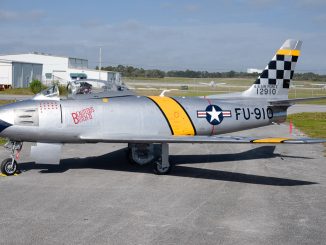
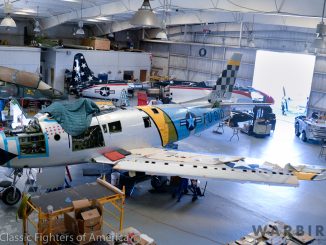
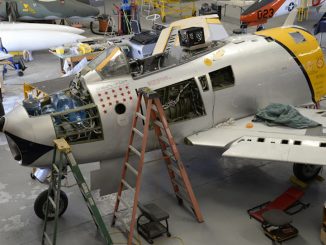
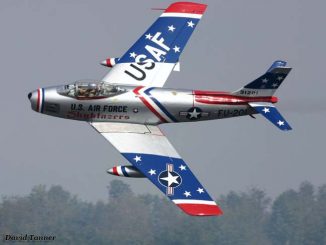
Be the first to comment
Graphic Design, Branding and Aviation Art